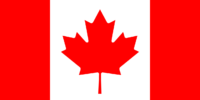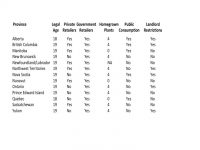The Canadian federal government is going where the U.S. (for now) is not: namely allowing provinces to channel federal agricultural funds into commercial cannabis production on the provincial level. The program is called the Canadian Agricultural Partnership (or CAP), which is a $2.2 billion annual initiative designed to support agricultural businesses across the country.
So far, not every province has opened this funding to cannabis production, although British Columbia already has, and Alberta is currently considering it.
Even more intriguing of course, are other programs that tie into such agricultural subsidies (including government support for exporting product). See Europe for one.
These programs are of course nothing new, including in the United States.
What is new, different and intriguing, is that unlike the United States, for the first time such government funds are being used to support not only the domestic cultivation of cannabis, but its global export. If there ever was the beginning of a “green new deal” then this might be it.
Canadian companies are certainly seeming to benefit from this federal largesse at the production point. For example, in the first weeks of April, CannTrust Holdings Inc. announced that its entire 450,000 square foot, perpetual harvest facility in Pelham, Ontario is fully licensed and will be online by summer 2019. THC BioMed just announced that it received Health Canada’s permission to begin additional production at its flagship location in Kelowna, B.C. And Beleave has just commenced sales of cannabis oil products at licensed facilities in Hamilton, Ontario.
The Rise of Government Funding In a “Publicly Owned” Company Environment
One of the more intriguing impacts of the rise of government funding for the industry comes at a time when the industry itself, certainly coming out of Canada, is facing a bit of a zeitgeist moment.
Sure, the industry has gained legitimacy, and there might be nascent cannabis funds in the UK, Switzerland and Germany, but the entire “public cannabis company” discussion is hitting a bit of a reset at the moment.
 It was after all, ostensibly “public” Wayland that just dusted much higher fliers from the stock price perspective on winning the German cultivation bid. In fact, some insiders on the ground have commented that it is precisely because Wayland is not a stock market favorite, rather focused on fundamentals that they got chosen in the first place. Starting with the old-fashioned idea of committing resources and elbow grease to create production on the ground, locally.
It was after all, ostensibly “public” Wayland that just dusted much higher fliers from the stock price perspective on winning the German cultivation bid. In fact, some insiders on the ground have commented that it is precisely because Wayland is not a stock market favorite, rather focused on fundamentals that they got chosen in the first place. Starting with the old-fashioned idea of committing resources and elbow grease to create production on the ground, locally.
There are also firms who are benefitting from the first tax funds that have flowed to promote the hemp industry (those are available from state governments here).
However, it is not just Germany where this discussion is going on in Europe right now. In Spain, there is political discussion about ensuring that the nascent and valuable cannabis industry does not end up in the control of “outsiders.” Namely international firms who have more of an eye on profit than community building. The idea of the cannabis industry as an economic development tool has certainly caught on in Europe (see Greece and Macedonia). And core in that idea is that the euros generated by this still remarkably price-resilient plant, and the products produced from it, should stay local.
Cannabis Socialism?
For now, and certainly in Canada, federal public funding looks pretty much like a fancy agricultural grant. But in the future as prices drop and the wars over strains and “medical” vs. “recreational” really begin to rage in Europe, the idea of government-funded cannabis cultivation may be an idea whose time has come.
The German automobile industry, for example, did not come from nowhere – and even today receives massive government funding. For now, certainly in Deutschland, that is not the case with cannabis, but things may be changing with the resolution of the first tender bid.
In the future, in other words, as countries across Europe begin to think about posting their own production bids and Germany contemplates additional ones, government funding of the industry and certainly incentives to help its growth will become much more widespread.










